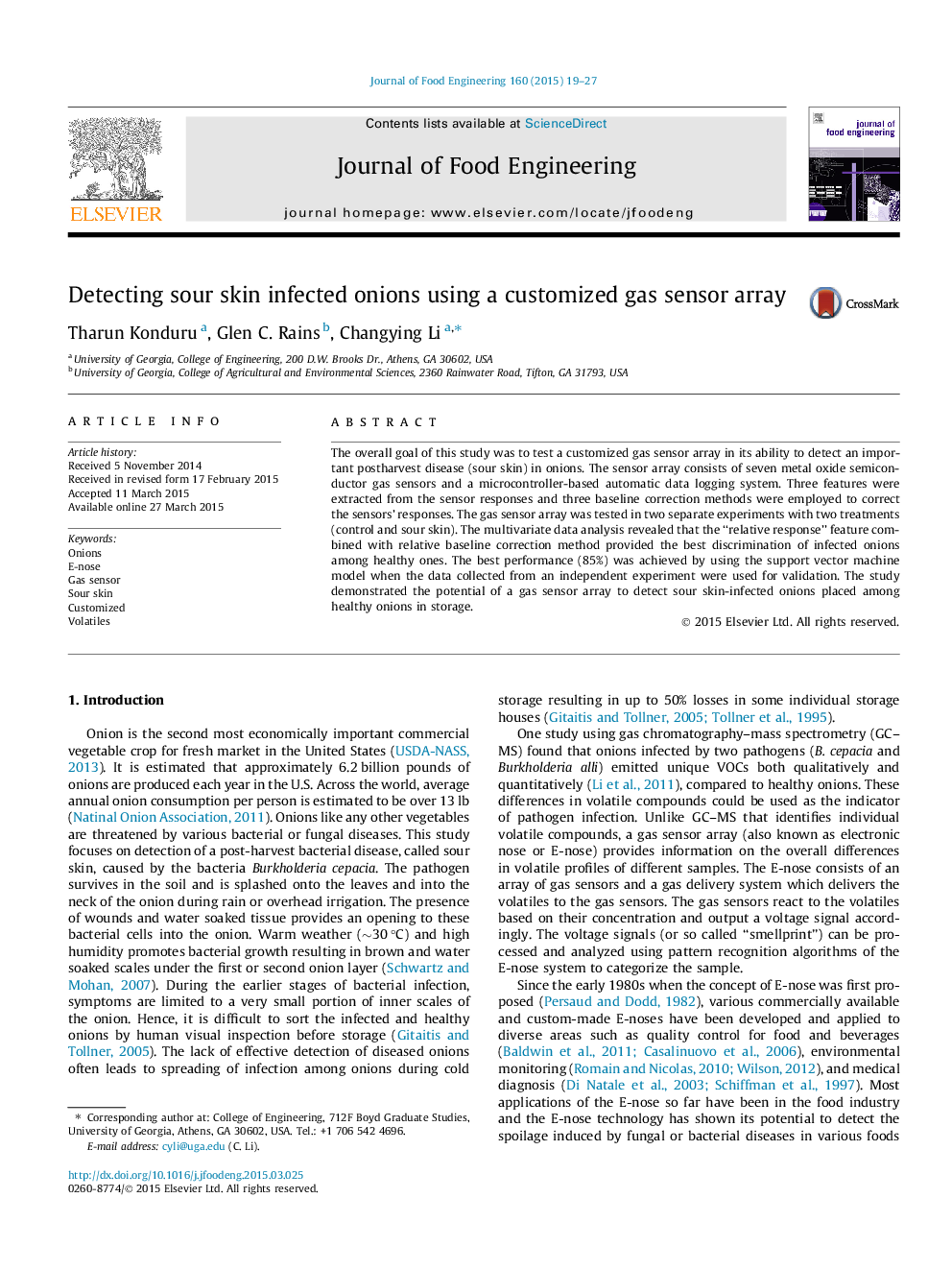| Article ID | Journal | Published Year | Pages | File Type |
|---|---|---|---|---|
| 222856 | Journal of Food Engineering | 2015 | 9 Pages |
•A customized gas sensor array was tested to detect postharvest disease in onions.•The differential, relative, and fractional baseline correction methods were used.•Three features (relative response, area, and slope) were extracted from the signal.•A classification accuracy of 85% was achieved by using the SVM model.•The customized gas sensor array could detect sour skin disease in storage.
The overall goal of this study was to test a customized gas sensor array in its ability to detect an important postharvest disease (sour skin) in onions. The sensor array consists of seven metal oxide semiconductor gas sensors and a microcontroller-based automatic data logging system. Three features were extracted from the sensor responses and three baseline correction methods were employed to correct the sensors’ responses. The gas sensor array was tested in two separate experiments with two treatments (control and sour skin). The multivariate data analysis revealed that the “relative response” feature combined with relative baseline correction method provided the best discrimination of infected onions among healthy ones. The best performance (85%) was achieved by using the support vector machine model when the data collected from an independent experiment were used for validation. The study demonstrated the potential of a gas sensor array to detect sour skin-infected onions placed among healthy onions in storage.
